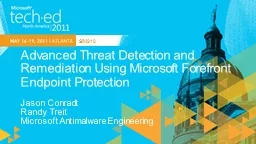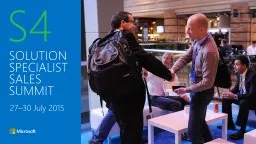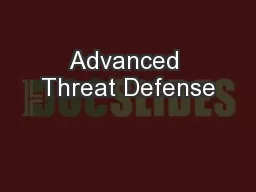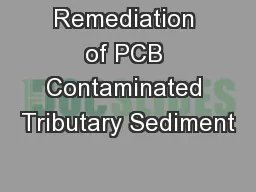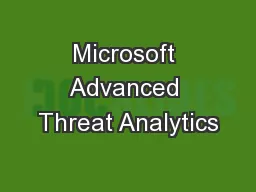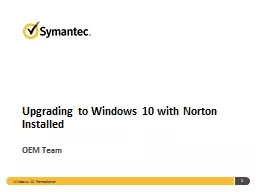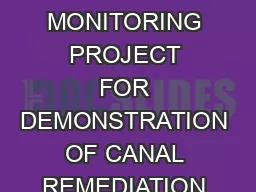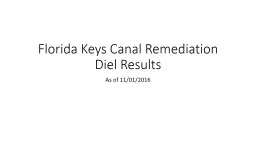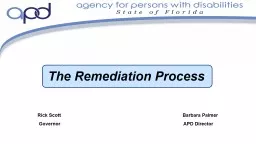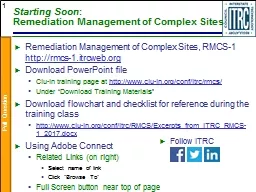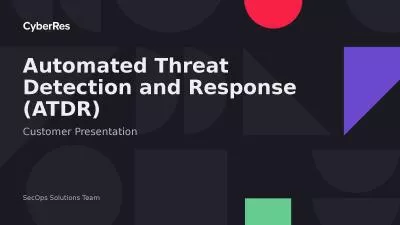PPT-Advanced Threat Detection and Remediation Using Microsoft F
Author : ellena-manuel | Published Date : 2017-10-29
Jason Conradt Randy Treit Microsoft Antimalware Engineering SIM310 Antimalware Realities Malware threats used to be relatively simple Antimalware Realities Malware
Presentation Embed Code
Download Presentation
Download Presentation The PPT/PDF document "Advanced Threat Detection and Remediatio..." is the property of its rightful owner. Permission is granted to download and print the materials on this website for personal, non-commercial use only, and to display it on your personal computer provided you do not modify the materials and that you retain all copyright notices contained in the materials. By downloading content from our website, you accept the terms of this agreement.
Advanced Threat Detection and Remediation Using Microsoft F: Transcript
Download Rules Of Document
"Advanced Threat Detection and Remediation Using Microsoft F"The content belongs to its owner. You may download and print it for personal use, without modification, and keep all copyright notices. By downloading, you agree to these terms.
Related Documents

